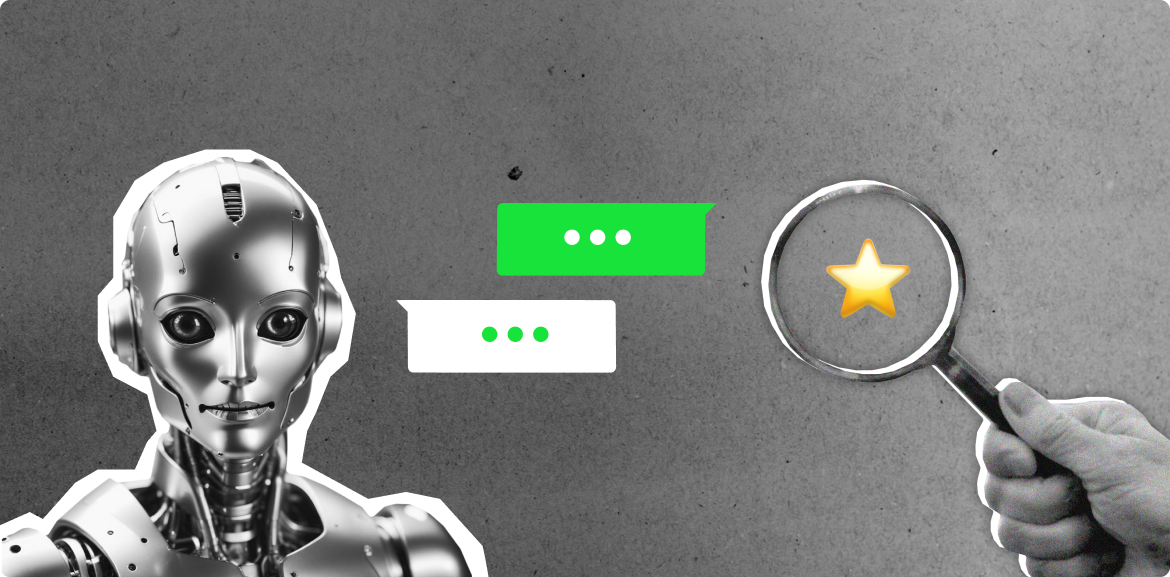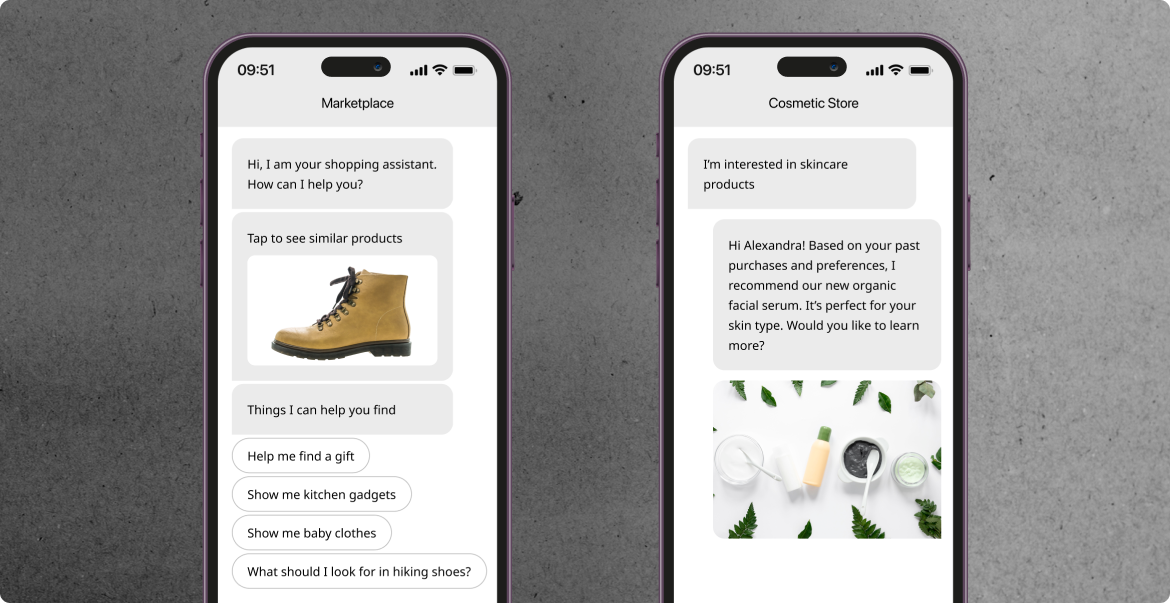Role of ChatGPT in Customer Communication – A Guide for 2024

Of late, AI has shaken up the business world, opening up incredible new opportunities for companies realizing AI’s potential to do more with less, business leaders across industries have shown keenness to apply AI to a diverse range of functions, hoping to streamline operations and increase employee productivity without breaking the bank. ChatGPT in particular, has proven to be a hugely popular language model, designed as it is to generate human-like texts based on the prompts it is fed. A form of generative AI designed by OpenAI, it has been an instant hit with companies since its launch, finding plenty of takers and even spawning a few rival products that are yet to generate the kind of impact ChatGPT has. And it helps that OpenAI has been constantly improving its ChatGPT models to enable it to perform better. There’s even buzz that GPT-5 will hit the market sometime soon.
So what role does it play in brand-to-customer communication? A huge one. With customers today being digital natives and preferring online modes of communication in their personal lives as well as in their dealings with businesses (be it during online research, product discovery, purchase, or even post-purchase support), it has become critical for brands to not just talk to customers across digital channels, but to generate huge volumes of content regularly. This requires significant time and resources, a luxury only a few companies can afford. This is where ChatGPT has scored high, helping businesses large and small to generate content in record time, well beyond any human capacity. It is an excellent resource for brand communications in many areas.
Use Cases of ChatGPT in Customer Communication
# 1 Enhanced Customer Support
One of the most common applications of ChatGPT is in customer support. AI chatbots are transforming how brands handle customer queries. More sophisticated than ever before, AI-bots can really finetune their answers to make sure the answer generated is relevant to the customer. When they are powered by the ChatGPT API, these bots can become even more powerful. In late April 2024, OpenAI announced that it was introducing APIs for GPT 3.5 Turbo and Whisper, which developers can integrate into their apps and products. Snapchat is already using this model, which offers Snapchatters a friendly, customizable chatbot at their fingertips that offers recommendations in seconds. Shopify’s consumer app Shop (which acts like a shopping assistant) is also powered by the GPT-3.5 API. It is helping to streamline in-app shopping by scanning millions of products to quickly find what buyers are looking for. ChatGPT helps bots perform better by analyzing customer data as well as previous interactions to develop responses that feel more tailored.

The ChatGPT tool can also automate several CX workflows to help teams become more efficient. For example, when integrated with a brand’s ticketing system, it can triage incoming tickets, prioritizing ones that need urgent attention based on their content. It can also help to automate communications by generating post-purchase emails, drafting survey and appointment texts, and so on.
It can also generate reports, summaries, and other content based on data inputs. Some of the other major benefits of using ChatGPT for customer support are:
- Instant Responses: ChatGPT can provide immediate answers to customer inquiries, regardless of the time of day. This 24/7 availability ensures that customers receive timely responses, which is crucial for maintaining high levels of customer satisfaction and engagement.
- Multilingual Support: ChatGPT can be trained in multiple languages, allowing brands to support and interact with a diverse customer base without needing multilingual staff. This broadens the brand’s reach and opens up new markets for business growth.
- Routine Query Handling: ChatGPT can efficiently manage routine and repetitive queries, freeing up human agents to focus on more complex issues. It can manage bookings, appointments, and even handle simple HR queries within an organization, freeing up time for employees to engage in more value-added activities. This not only optimizes resource allocation but also ensures that human expertise is utilized where it is most needed.
- Feedback Collection: Beyond answering queries, ChatGPT can be used to collect feedback through interactive and friendly conversations. Bots powered by ChatGPT can ask relevant questions based on the conversation flow and ensure that the feedback is recorded accurately, providing valuable insights into customer satisfaction and areas for improvement. This data is invaluable for improving products, services, and overall customer experience.
- Scalability: Handling high volumes of queries can be challenging for human agents alone. ChatGPT can scale instantly to handle spikes in customer contact, such as during product launches, sales, or technical issues, without compromising the quality of service.
- Consistency: ChatGPT offers consistent responses to customer queries, ensuring that every customer receives accurate and uniform information. This consistency is crucial for maintaining trust and reliability in a brand’s communication.
#2 Personalized Approach for Each Customer
By integrating with existing customer relationship management (CRM) systems, ChatGPT can glean customer insights at the most granular level and deliver hyper-personalized responses. It can use company-specific data such as the customer’s history, purchase patterns, social interactions, user and preferences and then use its own predictive power to take a tailored approach for each customer, making interactions feel more engaging and relevant than ever before. AI, coupled with company-specific data and context has enabled consumer insights at the most granular level, allowing B2C lever personalization through targeted marketing and sales offerings. ChatGPT can also generate personalized responses to customer complaints, write welcome messages, create personalized emails thanking customers for their reviews, and even gauge the client’s sentiments from their chats and adjust the tone of its responses accordingly.

#3 Content Generation
ChatGPT’s content creation capabilities have had a profound impact on businesses, enabling them to increase productivity manifold without increasing overhead costs. ChatGPT has really pushed the boundaries of what was previously thought possible, generating huge volumes of content in a matter of minutes. It has helped brands create a wide variety of content, in very little time, turbocharging an average team’s productivity. This has helped many a brand to maintain a consistent and active online presence, so essential to engage customers and improve organic rankings.
Communications teams use it to (among other things):
- Generate weekly posts for social media platforms
- Write blogs, newsletters, product descriptions
- Develop personalized promotional emails, follow-up emails, etc.
- Draft FAQs covering common customer queries
- Draft holiday greetings for customers
- Suggest novel ideas for marketing campaigns and branding initiatives
- Creating interactive quizzes that both entertain and inform
ChatGPT can also play a big role in SEO optimization, suggesting trending topic ideas and keywords for content marketing. The tool can create catchy titles, uncover group search intent, generate meta descriptions, and more. By doing this, it can potentially increase the visibility of web content in search results, attracting more organic traffic to the site.
ChatGPT can also generate diverse styles of writing, tailored to the tone and brand voice of the company, and in multiple languages, ensuring the content resonates well with the target audience.




![[photo]](https://edna.io/wp-content/themes/edna/images/authors/rajrupa-ghoshal.jpg)
![[icon]](https://edna.io/wp-content/themes/edna/images/authors/ico-linkedin.svg)